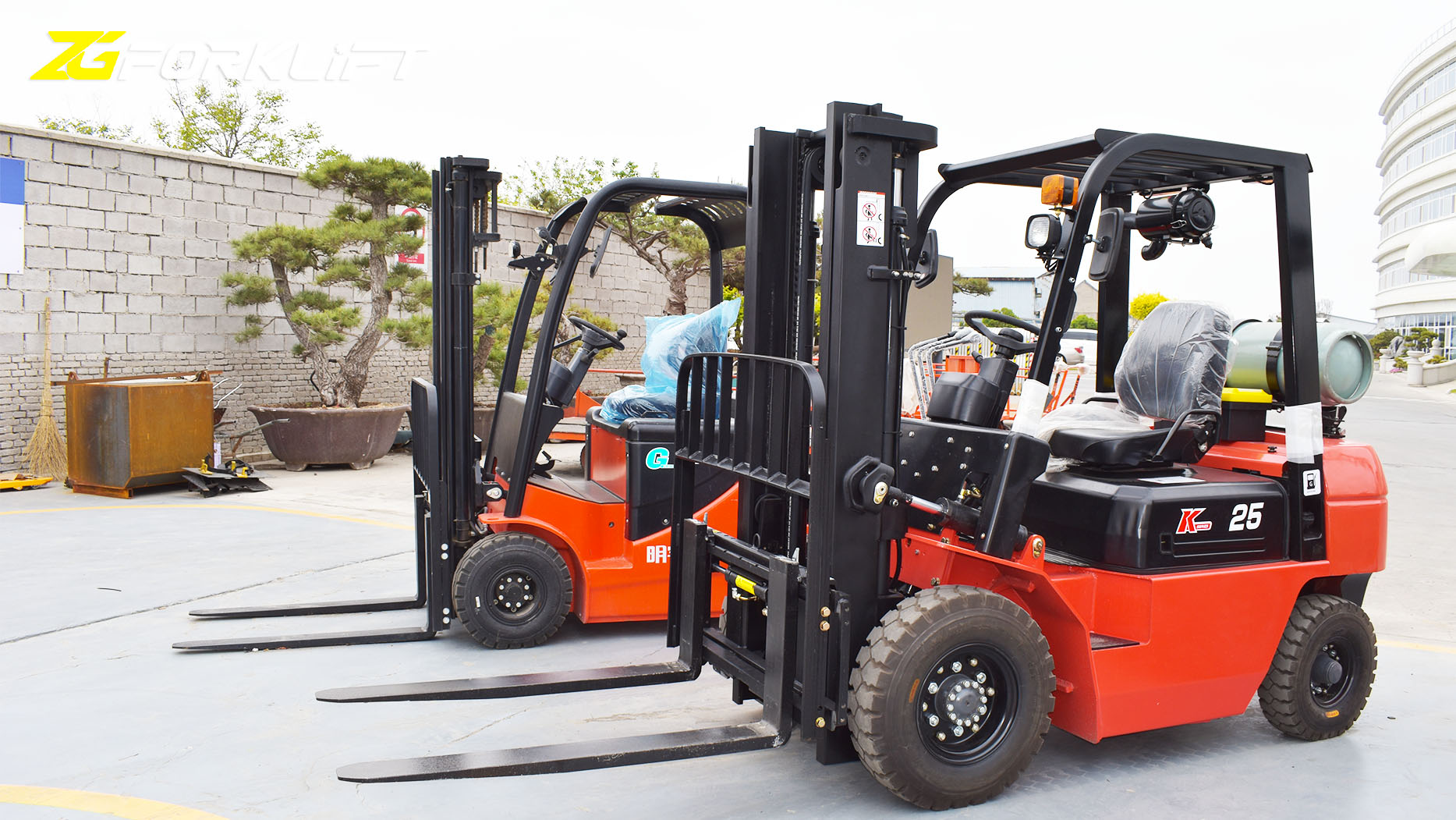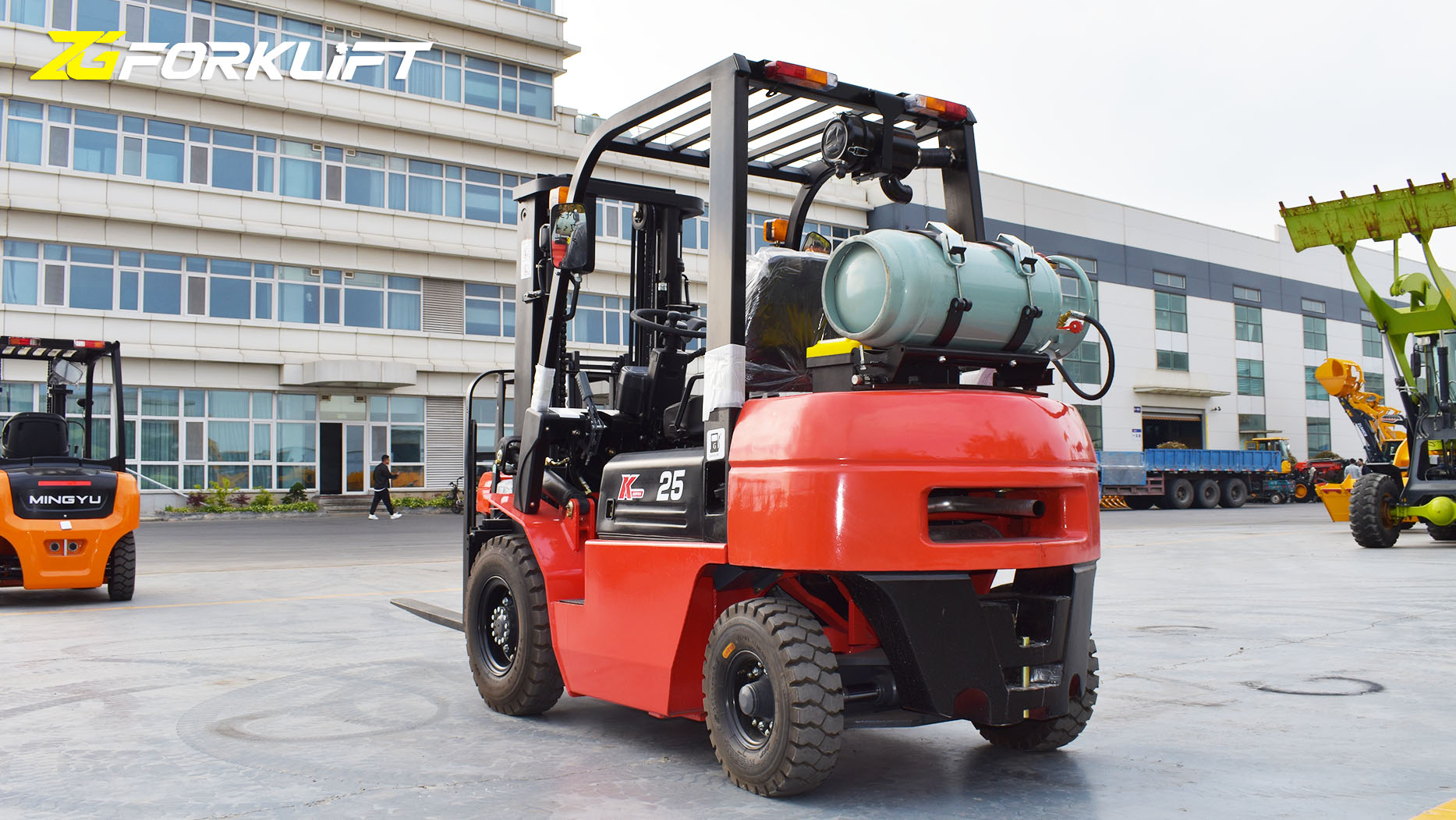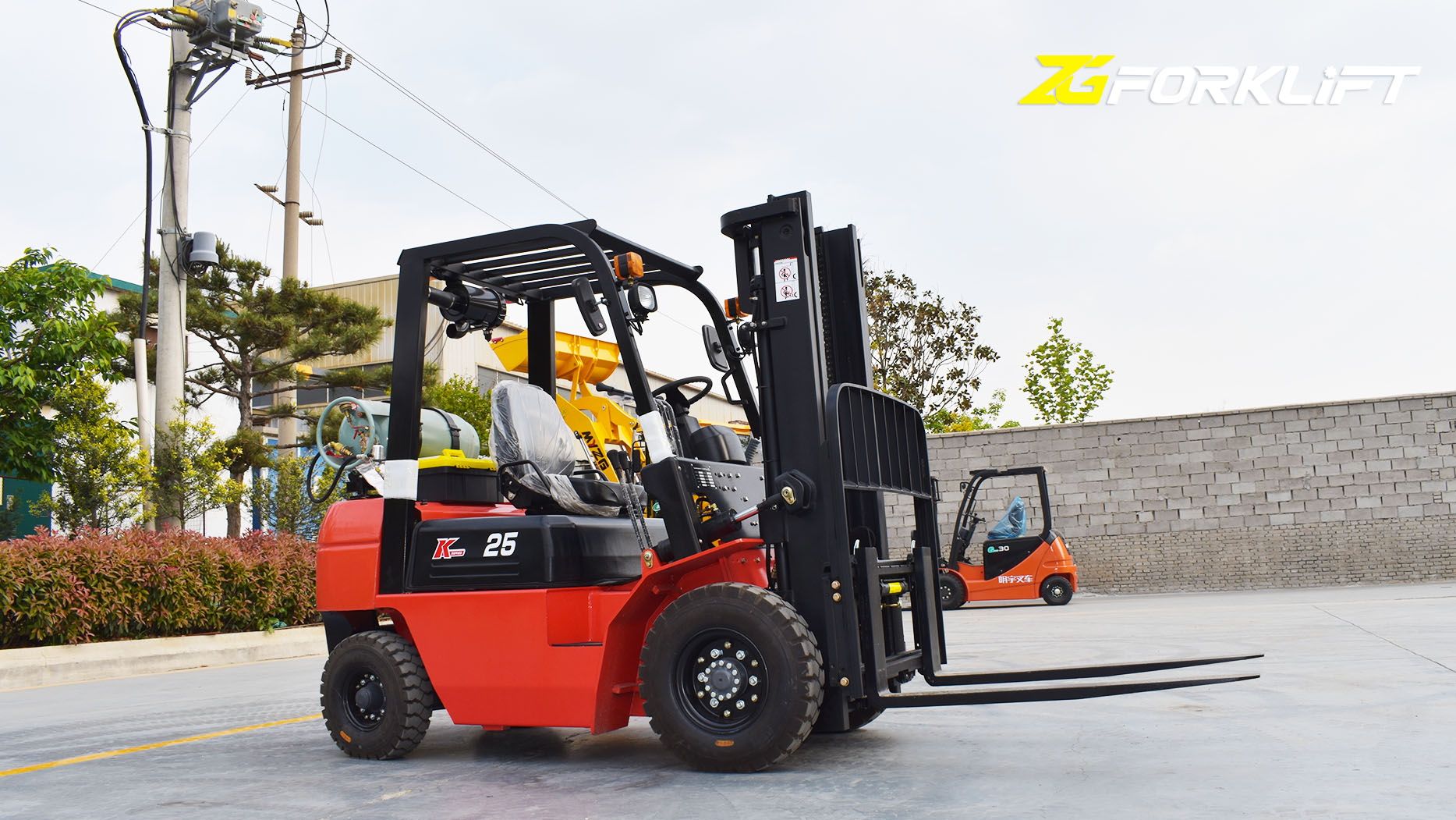What is an LPG Forklift? A Comprehensive Guide
Forklifts are indispensable tools in modern material handling, playing a crucial role in warehouses, factories, construction sites, and various other industries. While electric and diesel forklifts are common, another type offers a unique blend of power and versatility: the LPG forklift. LPG, or Liquefied Petroleum Gas, powers these machines, offering a compelling alternative for specific applications. This article provides a comprehensive overview of LPG forklifts, exploring their mechanics, advantages, disadvantages, applications, safety considerations, and maintenance requirements.
Understanding LPG and its Role in Forklifts:
LPG is a mixture of hydrocarbon gases, primarily propane and butane, that are easily liquefied under pressure. It's a readily available and relatively clean-burning fuel source. In LPG forklifts, the gas is stored in a pressurized cylinder, typically mounted on the back of the forklift. When the engine starts, the LPG is released from the cylinder, passes through a vaporizer (which converts the liquid LPG into a gas), and then mixes with air in the carburetor. This mixture is then ignited in the engine's cylinders, providing the power to drive the forklift.
Key Components of an LPG Forklift System:
Several key components make up the LPG fuel system in a forklift:
LPG Cylinder: A pressurized container holding the liquid LPG fuel. These cylinders come in various sizes and are designed for safe handling and storage.
Vaporizer/Converter: This component converts the liquid LPG into gaseous form, ensuring it can be properly mixed with air for combustion.
Carburetor: The carburetor mixes the gaseous LPG with air in the correct proportions for efficient combustion.
Engine: LPG forklifts typically use internal combustion engines modified to run on LPG. These engines are designed for durability and performance in demanding applications.
Fuel Lines and Filters: These components transport the LPG fuel from the cylinder to the engine, ensuring a clean and consistent fuel supply.
Advantages of LPG Forklifts:
LPG forklifts offer several advantages that make them a popular choice for certain applications:
Clean Burning: LPG burns cleaner than gasoline or diesel, producing fewer emissions and reducing air pollution. This makes them suitable for indoor use, especially in areas with limited ventilation (though proper ventilation is still crucial).
Lower Fuel Costs: In many regions, LPG is less expensive than gasoline or diesel, resulting in lower fuel costs for operation.
Quick Refueling: Replacing an empty LPG cylinder is a quick and easy process, minimizing downtime. This contrasts with the longer refueling times required for diesel forklifts or the charging times for electric forklifts.
Consistent Power: LPG forklifts provide consistent power output throughout their operation, ensuring reliable performance even under heavy loads.
Good Performance in Cold Weather: LPG forklifts generally perform well in cold weather conditions, making them suitable for outdoor use in colder climates.
Lower Maintenance Costs (Potentially): While debate exists about the overall maintenance costs compared to diesel, some argue that LPG engines can have lower maintenance costs due to cleaner burning, which can lead to less engine wear and tear. However, this depends on various factors, including operating conditions and maintenance practices.
Disadvantages of LPG Forklifts:
Despite their advantages, LPG forklifts also have some drawbacks:
Higher Initial Cost: LPG forklifts often have a higher initial purchase price compared to comparable diesel forklifts.
Fuel Storage and Handling: Storing and handling LPG cylinders requires adherence to safety regulations and procedures. This includes proper storage, cylinder handling techniques, and leak detection.
Refueling Infrastructure: Businesses need to have the necessary infrastructure for refueling LPG forklifts, including storage facilities for cylinders and trained personnel to handle cylinder changes.
Limited Availability in Some Regions: The availability of LPG fuel and refueling infrastructure may be limited in certain areas.
Potential Fire Hazard: LPG is a flammable gas, so proper handling and storage are crucial to prevent fire hazards.
Applications of LPG Forklifts:
LPG forklifts are well-suited for a wide range of applications:
Indoor Warehousing: Their cleaner emissions make them suitable for indoor use, especially in food processing, pharmaceuticals, and other industries with strict air quality requirements.
Manufacturing: LPG forklifts are used in various manufacturing facilities for moving materials, transporting work-in-progress, and loading/unloading trucks.
Construction: They are employed on construction sites for moving building materials, equipment, and supplies.
Agriculture: LPG forklifts are used in agricultural operations for handling crops, transporting bales of hay, and moving equipment.
Distribution Centers: They are commonly used in distribution centers for loading and unloading trucks, moving pallets, and managing inventory.
Safety Considerations for LPG Forklifts:
Operating LPG forklifts requires strict adherence to safety procedures:
Operator Training: All operators must be properly trained and certified to operate LPG forklifts, including safe handling of LPG cylinders.
Pre-Operation Inspection: A thorough inspection of the forklift, including the LPG system, should be conducted before each use.
Cylinder Handling: Follow safe procedures for handling, storing, and changing LPG cylinders.
Ventilation: Ensure adequate ventilation in areas where LPG forklifts are operated, even though they produce fewer emissions than diesel.
Leak Detection: Regularly check for LPG leaks using appropriate leak detection methods.
No Smoking: Smoking is strictly prohibited near LPG forklifts or LPG storage areas.
Emergency Procedures: Establish emergency procedures for dealing with LPG leaks or fires.
Maintenance of LPG Forklifts:
Regular maintenance is essential for ensuring the safe and efficient operation of LPG forklifts:
Regular Inspections: Conduct routine inspections of the LPG system, engine, and other components.
Filter Changes: Replace air filters, fuel filters, and oil filters according to the manufacturer's recommendations.
Leak Checks: Regularly check for LPG leaks using a leak detector solution or other appropriate methods.
Engine Tuning: Tune the engine as needed to ensure optimal performance and fuel efficiency.
Professional Service: Have the LPG system and other critical components serviced by qualified technicians.
Conclusion:
LPG forklifts offer a compelling combination of power, versatility, and cleaner emissions, making them a suitable choice for a variety of material handling applications. Their ability to operate indoors, quick refueling times, and potentially lower fuel costs are significant advantages in certain industries. However, it's important to weigh these benefits against the potential drawbacks, such as higher initial costs and the need for proper LPG handling and storage procedures. By carefully considering the specific needs of your operation, safety requirements, and cost factors, you can determine if an LPG forklift is the right solution for your material handling needs.
Post time:Feb.06.2025



